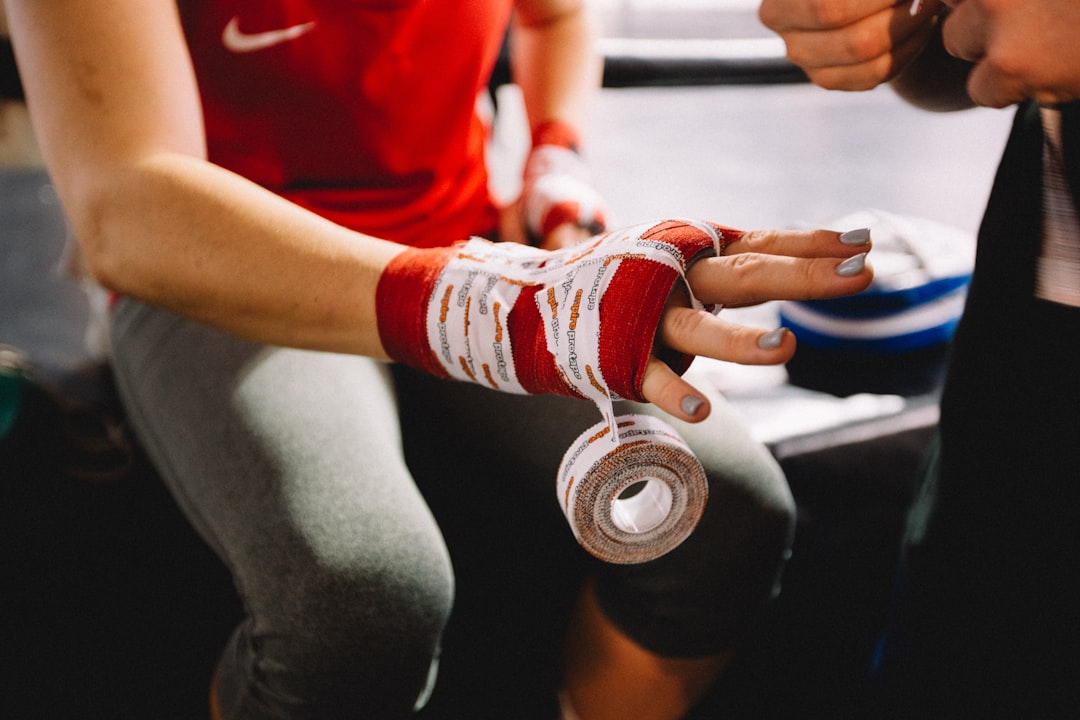All Nonfiction
- Bullying
- Books
- Academic
- Author Interviews
- Celebrity interviews
- College Articles
- College Essays
- Educator of the Year
- Heroes
- Interviews
- Memoir
- Personal Experience
- Sports
- Travel & Culture
All Opinions
- Bullying
- Current Events / Politics
- Discrimination
- Drugs / Alcohol / Smoking
- Entertainment / Celebrities
- Environment
- Love / Relationships
- Movies / Music / TV
- Pop Culture / Trends
- School / College
- Social Issues / Civics
- Spirituality / Religion
- Sports / Hobbies
All Hot Topics
- Bullying
- Community Service
- Environment
- Health
- Letters to the Editor
- Pride & Prejudice
- What Matters
- Back
Summer Guide
- Program Links
- Program Reviews
- Back
College Guide
- College Links
- College Reviews
- College Essays
- College Articles
- Back
Aggression in Sports
In 1978, at a preseason football game, Darryl Stingley was trying to catch a pass, and that’s when Jack Tatum rammed his helmet right into Stingley's neck. This caused Stingley’s fourth and fifth cervical vertebrates to be completely shattered. This attempted block caused Stingley to have to retire from football. Aggression in sports is very common among athletes, aggression is a verbal or physical behavior from one person to another group or single person. Aggression in sports is the same. Aggression in sports is when a person is verbally or physically harming another person, this could be in the form of yelling, hitting/slapping someone, getting very angry at small mistakes, or getting mad at teammates. Although aggression in sports and normal aggression are very similar, there is one main difference that aggression in sports has, it improves performance since the athlete is trying as hard as they can.
Hostile aggression is a type of aggression in which the athlete’s goal is to cause harm or injury to the opponent, focusing on hurting the player because of anger, instead of hurting them trying to score (Morris). This could be if a soccer player tackles a player who is not in contact with the ball/has no chance of getting it, but just hurts them because of anger. This is less common in athletes since most players have self-control, and they understand that this could get them in trouble. Hostile aggression is also linked to anger management issues, no self-control, impulsiveness, and not focusing on hurting the other player, rather than the game. Another big reason for hostile aggression is frustration, if the player is having a bad day/bad performance they usually get frustrated and lose focus on the game and think the only way they can help their team is by hurting other players (Klein).
Instrumental aggression is the other major type of aggression, this type is when a player acts aggressively towards the opponent, in order to get a point (rather than out of anger). This could be when a football player tackles another player in order to get a touchdown. This type of aggression is formed by determined players, who are focused on the game rather than hurting players. Unlike hostile aggression, this is very common in high-level/professional athletes, specifically in tough sports like football, rugby, or others that require physical contact (Morris). This could also be used in defense when trying to get the ball, good defense must be aggressive to work.
Whether somebody uses hostile, instrumental, or no aggression can be predicted by their personality, and how the player has been brought up or taught. Some people may have been taught from a young age that all types of aggression are bad, while other people may have been taught that aggression is the only way to win. This can determine whether a person is aggressive or not (Morris). Another reason is feeling pressure to win games from family, friends, etc. (Hallam). They only receive praise for winning, which is something everyone wants, and therefore try to be as good as they can, which can lead to aggression if they feel they aren’t performing well enough (Hallam). And as I mentioned earlier, self-control is a big factor, people with more self-control usually have no aggression or light instrumental. And more experienced players don’t typically use aggression (in non-aggressive sports) since they know they can do good without having to hurt anyone. People usually consider hostile aggression bad and instrumental aggression good, but you could get called out for either one in non-aggressive games. Therefore, most athletes have trained themselves not to use aggression at all, or rarely any instrumental.
In conclusion, certain levels or types of aggression can be acceptable, but it’s always better to not use any at all. Although this depends on the sport, if you watch professional football or rugby, of course, here's going to be aggression because it is an aggressive sport. If you watch a sport like soccer or basketball, there really shouldn’t be any major aggression, since these players (usually) have trained themselves not to use it, although some people can still get frustrated, or feel overwhelmed and could use it. As Stingley has shown. There are some sports where aggression is never used, such as volleyball or running, any form of aggression used in this is bad, and could end up in the player out of the game. This doesn’t mean that the players don’t feel like getting aggressive, rather they’ve learned not to.
Similar Articles
JOIN THE DISCUSSION
This article has 0 comments.

